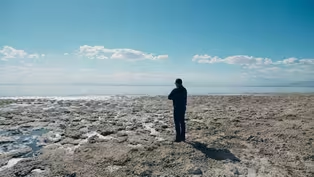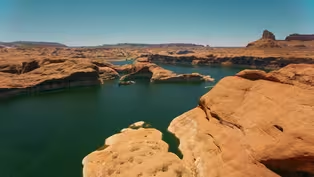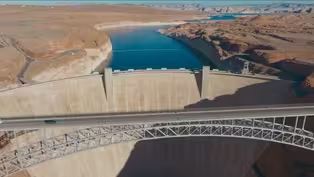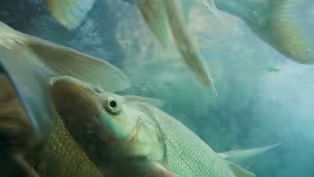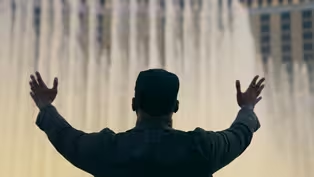
Reviving the River: Hope Returns to the Colorado Delta
Clip: Season 2 Episode 5 | 4m 59sVideo has Closed Captions
Aída Navarro joins the fight to revive the Colorado River Delta — and hope is flowing again.
The Colorado River Delta was once a lush wetland. After decades of damming and diversion, it dried up — until a rare pulse flow brought water, beavers, and hope back. Aída Navarro leads a movement to reconnect communities and nature, proving that with care and coordination, deserts can bloom again. But as water politics intensify, the future remains uncertain.
Problems playing video? | Closed Captioning Feedback
Problems playing video? | Closed Captioning Feedback

Reviving the River: Hope Returns to the Colorado Delta
Clip: Season 2 Episode 5 | 4m 59sVideo has Closed Captions
The Colorado River Delta was once a lush wetland. After decades of damming and diversion, it dried up — until a rare pulse flow brought water, beavers, and hope back. Aída Navarro leads a movement to reconnect communities and nature, proving that with care and coordination, deserts can bloom again. But as water politics intensify, the future remains uncertain.
Problems playing video? | Closed Captioning Feedback
How to Watch Human Footprint
Human Footprint is available to stream on pbs.org and the free PBS App, available on iPhone, Apple TV, Android TV, Android smartphones, Amazon Fire TV, Amazon Fire Tablet, Roku, Samsung Smart TV, and Vizio.
Buy Now

Surprising Moments from Human Footprint
Do you think you know what it means to be human? In Human Footprint, Biologist Shane Campbell-Staton asks us all to think again. As he discovers, the story of our impact on the world around us is more complicated — and much more surprising — than you might realize.Providing Support for PBS.org
Learn Moreabout PBS online sponsorship-(birds honking and calling) -(whooshing) (Aída) Imagine the Colorado River Delta a hundred years ago.
It was miles and miles of wetlands.
(whooshing) (pen scraping) (Shane) Aída Navarro has a passion for writing.
So, for her, bringing diverse stakeholders together to revive the delta is like weaving together the threads of a great story.
(mellow music) (Aída) After the dams were built and after different decisions were made, this area dried out.
All these livelihoods that used to depend on the river, that used to swim in it, sail on it, and fish.
And next thing you know, there’s nothing, there’s desert, and there’s only water going through irrigation canals.
(mellow music) (Shane) I met Aída at the annual Raise the River event.
Ten years ago, people celebrated when a binational agreement between the U.S. and Mexico sent a pulse flow, a rush of over 100,000 acre feet of Colorado River water, into the delta for the first time in decades.
-(energetic music) -(water rushing) (Aída) When the water started flowing, it was just a frenzy of happiness and joy, and everyone came down to the river and started bathing in it and fishing.
That was our first grasp of how impactful this could be for the community.
(Shane) This year’s event, celebrating the anniversary of that pulse flow, took place at an ecological restoration site, where the comeback has been dramatic.
(gentle music) (Aída) The trees used to be very little.
If you now go there, you will see trees that are, I don’t know, 30 feet tall.
There are a few families of beavers.
It’s beautiful.
(Shane) Even that brief infusion of Colorado River water fueled a 16% increase in vegetation and rekindled hope that the delta could come back.
(Aída) It proves that we can turn things around.
There is hope for us to do things right.
(Shane) The rare places where water does make it into the delta provide a glimpse of what could still be.
(wondrous music) (Shane) Juan and Alex are my guides to La Cienega de Santa Clara, a now-critical wetland that, much like the Salton Sea, was created by accident, growing and shrinking with agricultural runoff from fields in California.
(geese honking) (Shane) Today, in the otherwise arid delta, La Cienega hosts hundreds of thousands of migratory birds.
(somber music) (Shane) We move a lot of things around.
♪ We move entire rivers.
And I think, as you move down the Colorado, you see that pretty blatantly.
♪ We can turn deserts into oases, but we can also turn oases into deserts.
The forces we’ve unleashed to bend this river to our will seem so much bigger than the humans working to restore it.
But people built those dams and canals, and people can build a movement, too.
What was so exciting to you about this project?
The fact that it seemed impossible to bring water and life back to the Colorado River Delta.
And now, here we are.
♪ (Shane) On the Colorado River, we did what people do best.
We saw a challenge, tapped into our limitless ingenuity, and built a solution.
But the nature of the fix, and whose interests it really serves, tell us more about ourselves than we’d like to admit.
The Beach Boys Played Here. Now It’s a Toxic Dust Bowl.
Video has Closed Captions
Clip: S2 Ep5 | 5m 13s | Toxic dust, dead fish, and vanishing water — what happened to California’s inland sea? (5m 13s)
The Dam Truth: What Glen Canyon Tells Us About a Drying West
Video has Closed Captions
Clip: S2 Ep5 | 9m | The Glen Canyon Dam promised water and power — but the river had other plans. (9m)
Video has Closed Captions
Preview: S2 Ep5 | 30s | A journey down the Colorado River reveals the ripple effects of humanity’s quest to conquer water. (30s)
Tag, You're It: Tracking the Grand Canyon's Toughest Fish
Video has Closed Captions
Clip: S2 Ep5 | 4m 35s | USGS biologists tag humpback chub to monitor life in a changing Grand Canyon river. (4m 35s)
Vegas vs. the Desert: Plumbing the Impossible
Video has Closed Captions
Clip: S2 Ep5 | 11m 19s | Las Vegas defies the desert with epic engineering — but at what long-term cost? (11m 19s)
Providing Support for PBS.org
Learn Moreabout PBS online sponsorship
- Science and Nature

Explore scientific discoveries on television's most acclaimed science documentary series.

- Science and Nature

Capturing the splendor of the natural world, from the African plains to the Antarctic ice.












Support for PBS provided by:
